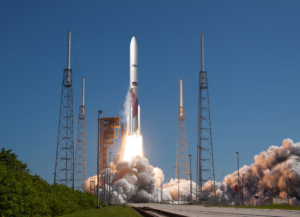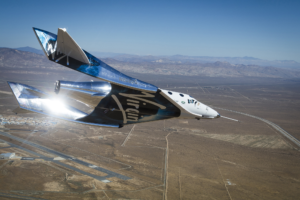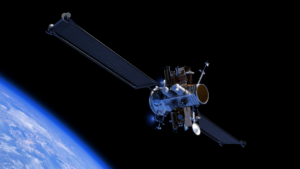
When Should We Expect To See New Glenn Lift-Off For The First Time?
New Glenn is a launch vehicle that has been in development for quite a while now. Around one decade ago in 2012, design work began on the launch vehicle meant to change how we access space. Since then, Blue Origin has continued to work on the rocket and run into various complications and delays throughout the process. Over time, this has pushed back the expected maiden flight of New Glenn multiple times.
This being said, recently we saw a significant milestone with the first official shipset of BE-4 engines delivered to ULA for Vulcan. The reason this is so important has to do with the upcoming tests and application to New Glenn which requires 7 of these engines on the first stage. However, this brings up the question of when should we expect to see this rocket lift off for the first time.
This can often be a hard event to estimate as rocket companies are quite ambitious regarding different future milestones. Thankfully, a few recent events and updates from various sources give us a better idea of the future of New Glenn. Here I will go more in-depth into when we should expect New Glenn’s first launch, recent progress on the rocket, what the future holds, and more.
Update & Expected Launch Date

While Blue Origin themselves have not said much regarding a future New Glenn launch date, there are a few different sources and progress that we can look at to determine a realistic timeframe. Earlier this month, when asked about a future launch date, Eric Berger replied with a tweet saying, “NET 2024. Perhaps not even then. It’s coming, but it will be awhile yet.” The reason this tweet and estimate have merit is the fact that Eric Berger is a journalist with different anonymous sources within the industry. He later clarified that Blue Origin as a company is targeting 2024 for the first launch, however, a more realistic estimate would be later in 2025 as New Glenn still has a lot of work and testing necessary prior.
In addition to this estimate, recently Blue Origin met a significant milestone that has to do with New Glenn’s future. Specifically, just two weeks ago they tweeted mentioning, “The first shipset. The first of many. #BE4 flight engines are now being integrated into the @ulalaunch#VulcanRocket.” In addition, Bob Smith, CEO of Blue Origin commented highlighting, “We’re excited to see ULA’s Vulcan fly. The BE-4 is a great engine, and we’re proud of Team Blue for achieving this milestone as part of ULA’s team. It’s been a wonderful partnership, and this shipset is the first of many more to come.” Over the past few months, we have watched some of the final development and testing of these two flight engines. Back in 2014, it was announced that the BE-4 engine would also be used on the United Launch Alliance’s Vulcan Centaur launch vehicle. This led to a deal between the companies that has a few impacts on New Glenn’s future. For one, with this partnership, Blue Origin has certain requirements surrounding delivering engines to ULA for Vulcan. This means that the company needs to create enough capable flight BE-4s for not only New Glenn but Vulcan as well.
While the added production requirements are not necessarily a benefit for New Glenn’s schedule, on the bright side, in only a few months from now we can expect to see Vulcan lift off. This launch will provide Blue Origin with some invaluable information based on how these engines perform. If they end up working perfectly, Blue Origin will need to increase production and testing quite significantly in order to test New Glenn in the future. On the other hand, if something were to go wrong on Vulcan’s maiden flight relating to the BE-4 engines, it would mean major delays for New Glenn as well as Blue Origin as the company figures out what went wrong and how to prevent it from happening again.
Another important aspect to consider regarding New Glenn’s delays and future maiden flight, is understanding how big of a jump Blue Origin is making. The company is going from New Shepard, an 18 meter tall rocket producing around 110,000lbf of thrust, to an almost 100 meter tall partially reusable launch vehicle expected to produce over 3.8 million lbf at sea level. Not to mention the fact that they are trying to land the booster on a moving platform out at sea. While ambitious innovations can produce incredible things, it also is by no means easy and can lead to somewhat constant delays over the course of rocket development and testing. Based on all these factors, a realistic future date for New Glenn’s first launch likely would be around mid to late 2025.
New Glenn Overview

Now that we know more about a realistic future New Glenn launch date, and some of the recent progress the rocket has made, we can take a closer look at New Glenn itself and what exactly is Blue Origin’s plan. New Glenn is a single configuration heavy-lift launch vehicle featuring a reusable first stage built for 25 missions. While in the past we have seen a few hints at work on a reusable upper stage, Blue Origin still advertises the rocket as partially reusable with just booster landings. It’s possible that initial launches feature an expendable upper stage and in the distant future, Blue Origin tries to go fully reusable with New Glenn.
Blue Origin points out that propulsion technology is foundational to the New Glenn program. New Glenn benefits from more than a decade of engine and related technology development. Beginning with the BE-3, a 490 kN (110,000 lbf) sea level thrust liquid oxygen/liquid hydrogen (LOX/LH2) engine used to power New Shepard, Blue Origin is confident they have demonstrated reliable, frequent reuse and deep throttling capability. The BE-3 has amassed significant test heritage totaling over 54,000 seconds of runtime and over 650 starts since development began in 2010. For New Glenn’s first stage, Blue Origin will use seven BE-4s, a 2,400 kN(550,000 lbf) sea level thrust booster engine. The BE-4 uses LOX and liquefied natural gas (LNG), a commercial form of methane, as an affordable, clean, and operable propellant combination. Industrial-grade LNG is plentiful and inexpensive, and its use allows for autogenously pressurized tanks and the elimination of helium as a pressurant.
BE-4 was designed from the beginning to be a medium-performing version of a high-performance architecture. A conscious design choice made to lower development risk while attempting to meet performance, schedule, and reusability requirements.
Focusing on the rocket’s structure, the New Glenn primary booster is an operationally reusable first stage with a length of 57.5 m (188.5 ft) and a tank diameter of 7 m (23 ft). The stage consists of three sections: aft, mid, and forward. The aft module of the booster contains the seven BE-4 engines. The restartable BE-4 engines provide precision thrust vector control and continuous deep throttle capability to support propulsive deceleration and landing maneuvers, while featuring long design life. The 8.5 m (28 ft) diameter engine skirt protects the engines from atmospheric reentry conditions and contains six stowed landing gear. The mid module of the booster houses the fuel (LNG) and oxidizer (LOX) tanks. The tanks are made of orthogrid aluminum and are designed to withstand the high g-loads realized during reentry. Large aerodynamic strakes on the aft end of the tanks give the returning first stage enhanced cross-range during descent and re-entry. The forward module of the booster features four actuated aerodynamic control fins for attitude control during descent. This section of the booster also provides ground umbilical connections for New Glenn and interstage housing of the two second stage vacuum-optimized BE-3U engines.
As for the second stage, this is an expendable LOX/LH2 stage with dual gimballing BE-3U engines with 1,060 kN (240,000 lbf) total thrust in vacuum. The stage also has a tank diameter of 7 m (23 ft) and uses common tooling with the first stage to reduce recurring costs. The length of the second stage tank is 16.1 m (52.9 ft) and the overall length including the two high expansion ratio nozzle BE-3Us is 23.4 m (76.9 ft). Similar to the first stage, the second stage has aft, mid, and forward sections. The aft section consists primarily of the two BE-3U engines, associated load bearing cross-bar thrust structure, and tankage/equipment for long duration operations. The reaction control system (RCS)/settling system uses tri-axial thrusters distributed in four places along the thrust structure. The second stage aft section integrates with the first stage forward section and provides one of two second stage umbilical interfaces. The mid-section contains all propellant tankage including a forward LH2 tank and an aft LOX tank, separated by a common insulated bulkhead. The tank barrels are orthogrid aluminum construction, and the domes are constructed from welded aluminum. A single external insulated LH2 supply line passes around the LOX tank. Altogether this creates the New Glenn launch vehicle, an ambitious design with a lot of work ahead of it.
Conclusion
Blue Origin has been working on the New Glenn launch vehicle for many years now. In that time, while development and testing have not been the fastest, the company is continuing to work on the rocket and is determined to see it launch. Based on different sources and recent updates, a launch around mid to late 2025 is realistic. We will have to wait and see how it progresses and the impact it has on the space industry.



